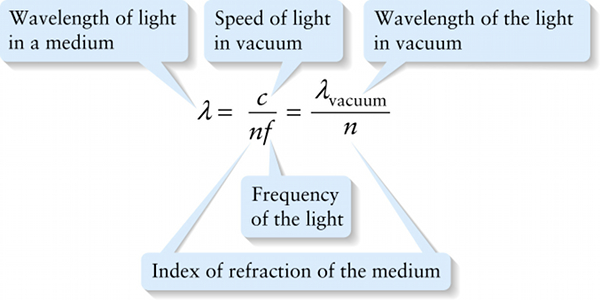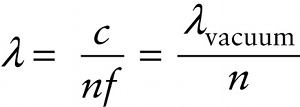Wavelength of light in a medium (23-8)
Question 1 of 5
Question
Index of refraction of the medium
{"title":"Wavelength of light in a medium","description":"Wrong","type":"incorrect","color":"#99CCFF","code":"[{\"shape\":\"poly\",\"coords\":\"82,133\"},{\"shape\":\"rect\",\"coords\":\"10,16,12,16\"},{\"shape\":\"poly\",\"coords\":\"144,22\"},{\"shape\":\"rect\",\"coords\":\"1,34,26,68\"}]"} {"title":"Speed of light in vacuum","description":"Incorrect","type":"incorrect","color":"#008000","code":"[{\"shape\":\"rect\",\"coords\":\"90,22,115,48\"}]"} {"title":"Wavelength of the light in vacuum","description":"Wrong","type":"incorrect","color":"#ffcc00","code":"[{\"shape\":\"rect\",\"coords\":\"185,3,209,37\"}]"} {"title":"Index of refraction of the medium","description":"Correct!","type":"correct","color":"#000080","code":"[{\"shape\":\"rect\",\"coords\":\"82,76,104,102\"},{\"shape\":\"rect\",\"coords\":\"223,66,255,94\"}]"} {"title":"Frequency of the light","description":"Incorrect","type":"incorrect","color":"#ff0000","code":"[{\"shape\":\"rect\",\"coords\":\"103,65,123,108\"}]"}Review
Equation 23-8 says that the wavelength is shorter in a medium with a higher index of refraction, where the propagation speed is slower. For example, red light that has a wavelength λvacuum=750 nm in vacuum has a wavelength in water (n = 1.33) equal to λ=λvacuum/n=(750nm)/(1.33)=564 nm. The frequency of this light is the same in both media: f=c/λvacuum=(3.00×108m/s)/(750×10−9m)=4.00×1014 Hz in vacuum and f=v/λ=c/(nλ)=(3.00×108m/s)/((1.33)(564×10−9m))=4.00×1014 Hz in water.

